Transforming Member Support:
Enhancing Grievance management for better customer experience
Web App
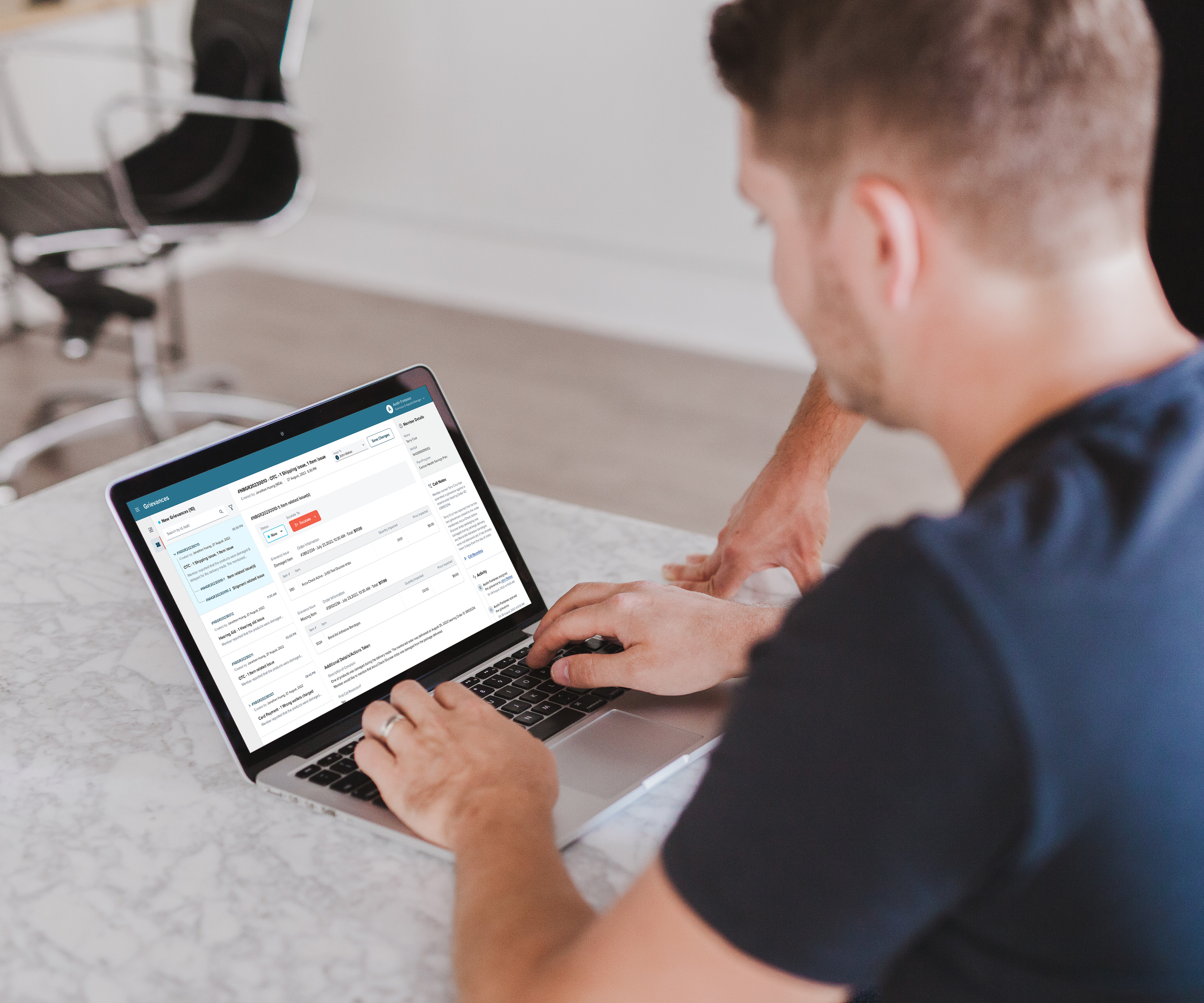
Web App

August 2022 - October 2022
User experience (UX)
Ideation
Interaction Design
Visual Design
Sai Charan Kankipati, Sole Designer
1 SME, SWE. F & B
2 Business Analysts
1 Product Owner
The objective of this project was to design a Grievance Management portal to replace the email-based escalation process, making grievance intake and resolution more structured, efficient, and trackable for Member Experience Agents (MEAs) and the Grievance team.
Email-Based Escalations Causing Delays
MEAs struggled to register grievances efficiently as they relied on emails to escalate grievances, while handling customer calls, as they had to switch between the CRM and the email client, leading to slow response times, lost requests, and inconsistent tracking of complaints.Lack of Visibility and Accountability
With grievances scattered across email threads, there was no clear ownership, making it difficult to track who escalated a complaint and what actions were taken.Time-Consuming Manual Processing
With grievances being reported through various calls and emails, they had to be manually sorted, categorized, and assigned, causing inefficiencies and increasing the risk of errors or delays.Uncategorized Complaints Leading to Delays
Member grievances varied widely, from general inquiries to benefits-related issues, but the lack of a structured categorization made it hard to prioritize and assign complaints, resulting in longer resolution times.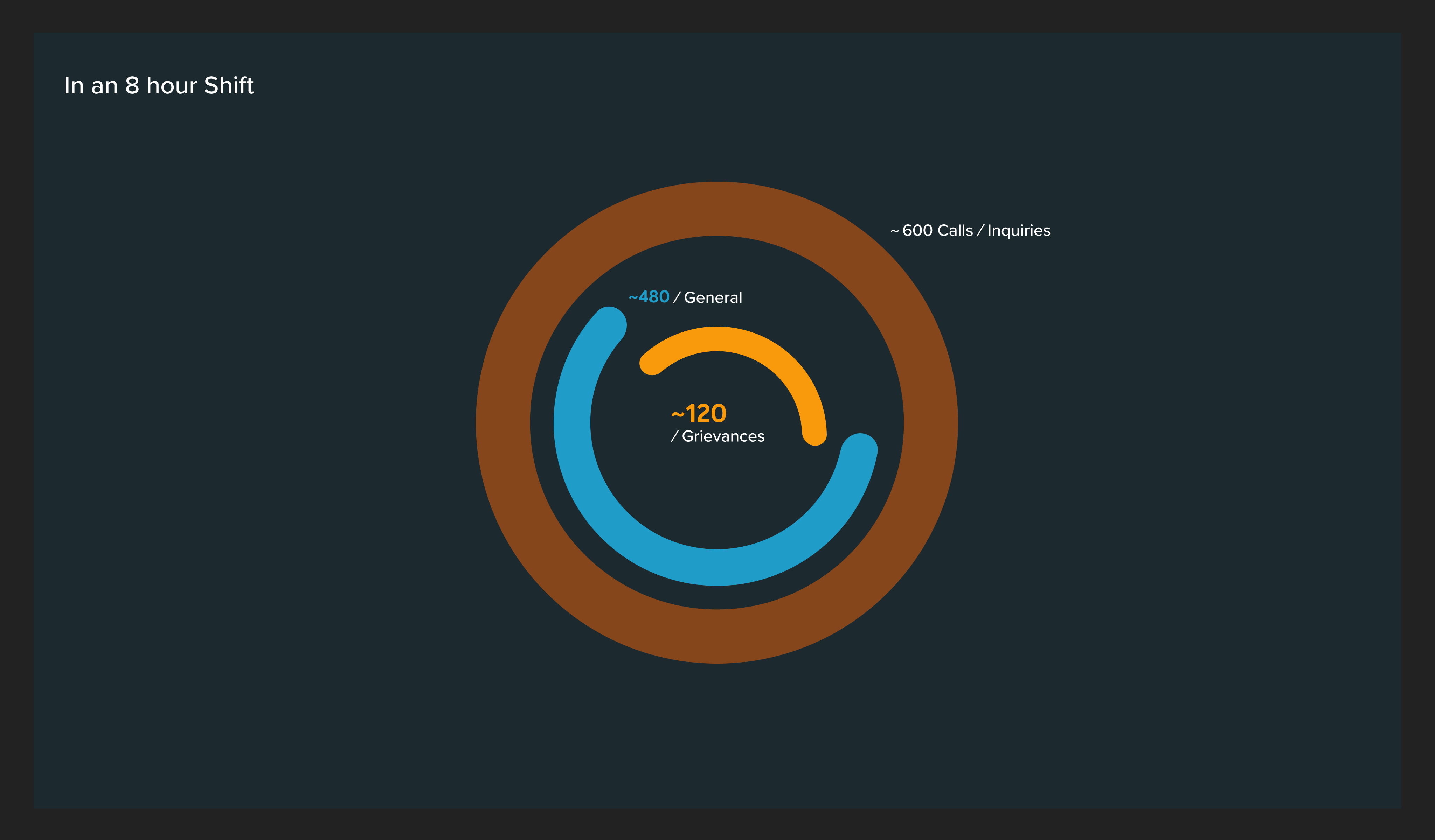
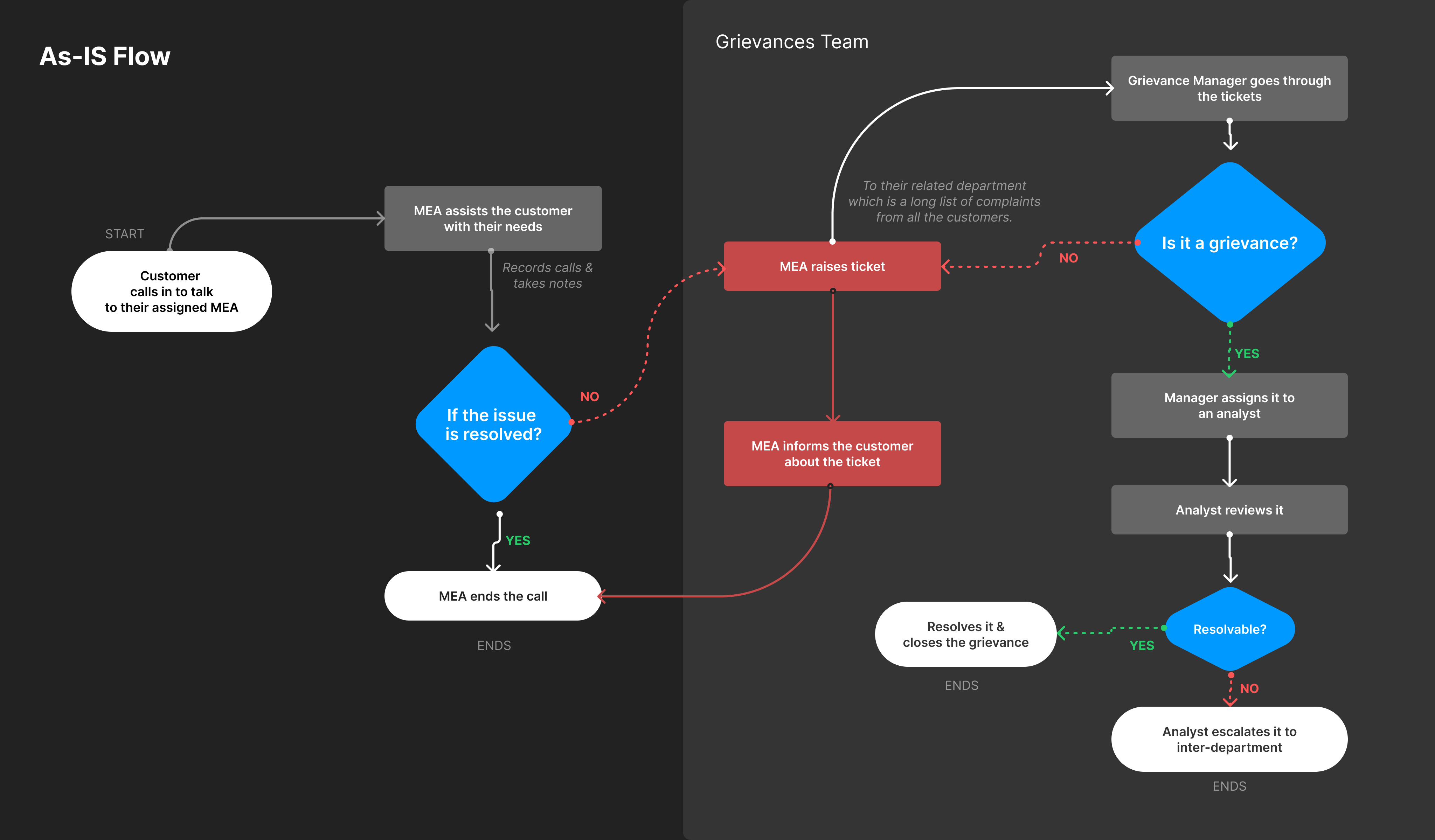
Day to Day: MEAs interact with their pre-assigned customer base on a regular basis to help them with processing of orders, account information and now with their grievances
Day to Day: Grievance Managers overlook the entire grievance intake and resolving process by tracking them and co-ordinating the team responsible to resolve the grievances.
Day to Day: Grievance Analyst goes through the actual grievance and assists the customers with the tools available at their disposal.
Day to Day: If the grievance is related to or out of scope of an analyst they escalate the issues to the pre-assigned inter-department experts who resolve the issues for the customer and escalate it back to Analysts who will close the grievance once its reviewed.
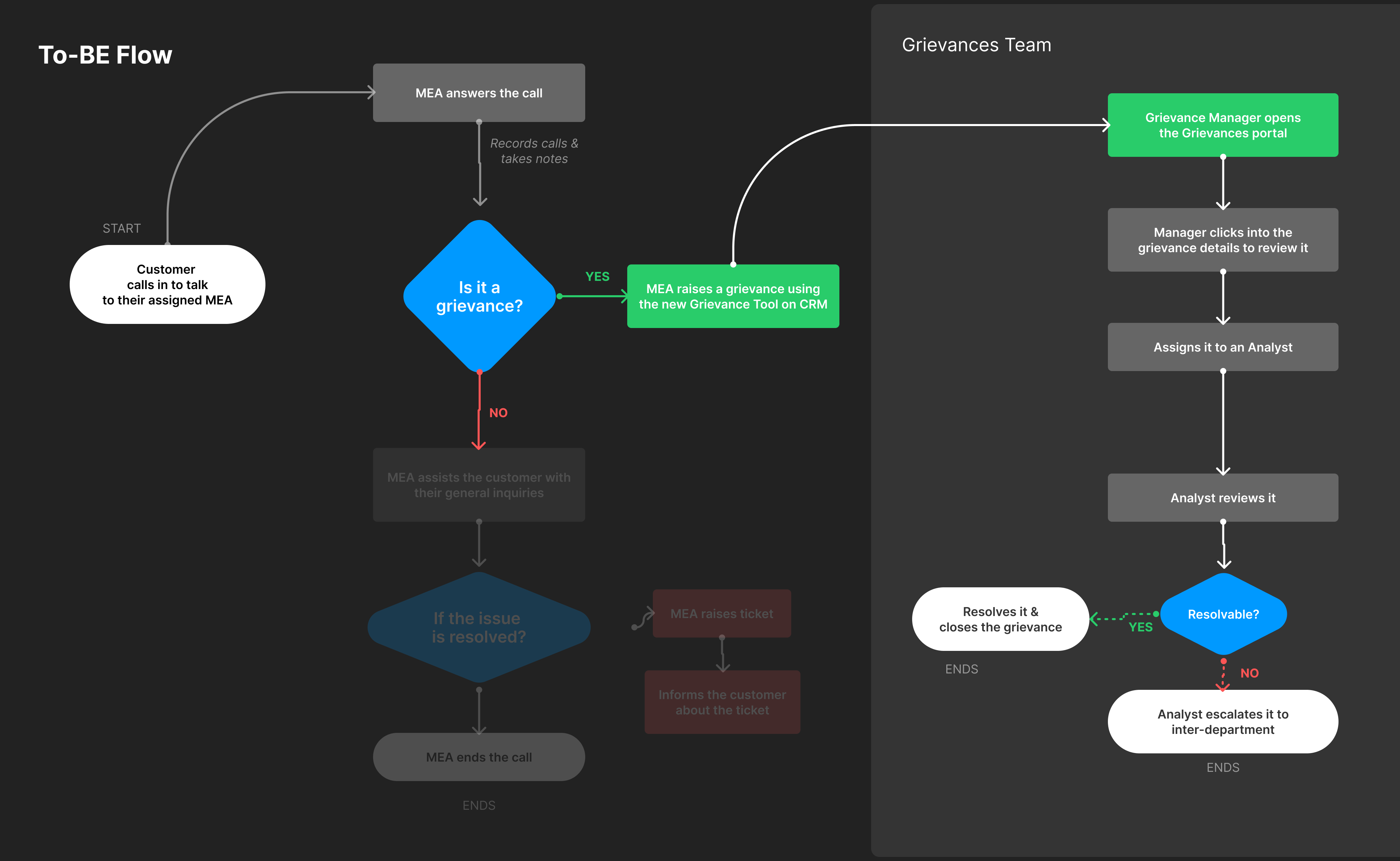
To streamline and speed up the process for MEAs, we decided to position the grievance entry point at the customer's plan level in the CRM. This strategic placement ensures a smoother workflow for MEAs, improving their overall efficiency.
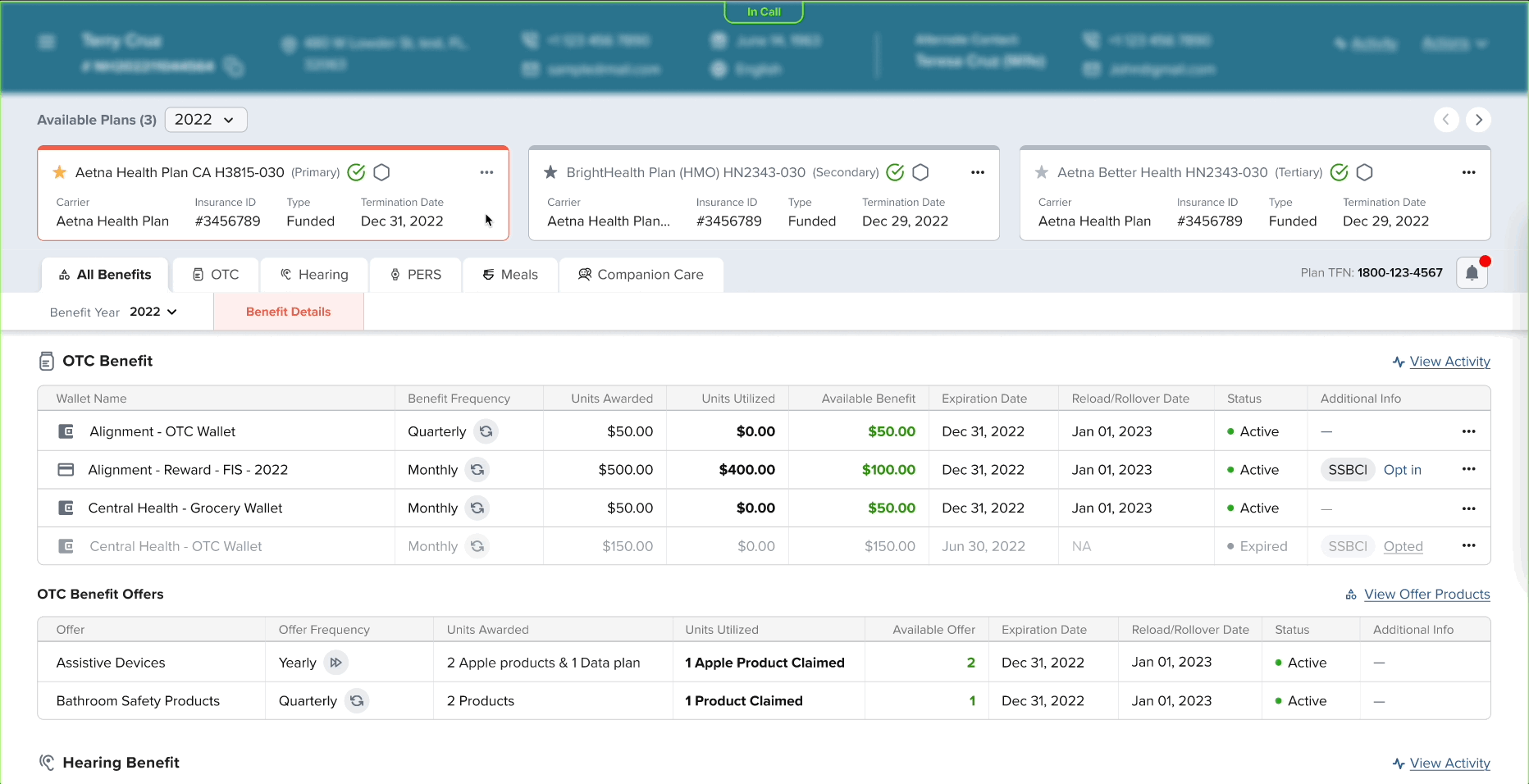
Eliminates the need to switch between tools, speeding up the grievance escalation process.
Improves traceability by clearly tracking who raised each grievance.
The grievance forms were designed to be simple, pulling relevant data directly from the plan-level information through interconnected platforms. This enables MEAs to quickly select options and report grievances with minimal effort.
To improve efficiency for MEAs, we explored two Grievance intake form variations, each designed to streamline complaint registration while minimizing disruptions.
A structured, multi-step process guiding MEAs through complaint registration in a sequential manner.

The Stepper-Based Form provided structure but slowed MEAs with multiple screens and limited scalability.
Reduces manual effort by automatically pulling relevant customer information into the grievance form.
Slower process – MEAs must go through multiple steps, increasing the time spent per grievance.
Interrupts workflow – Switching between steps adds friction, especially when handling multiple grievances.
Limited scalability – Adding new grievance types requires modifying multiple steps, making future updates complex.
A Simple, popup-initiated grievance intake within the CRM, keeping MEAs on the same page.
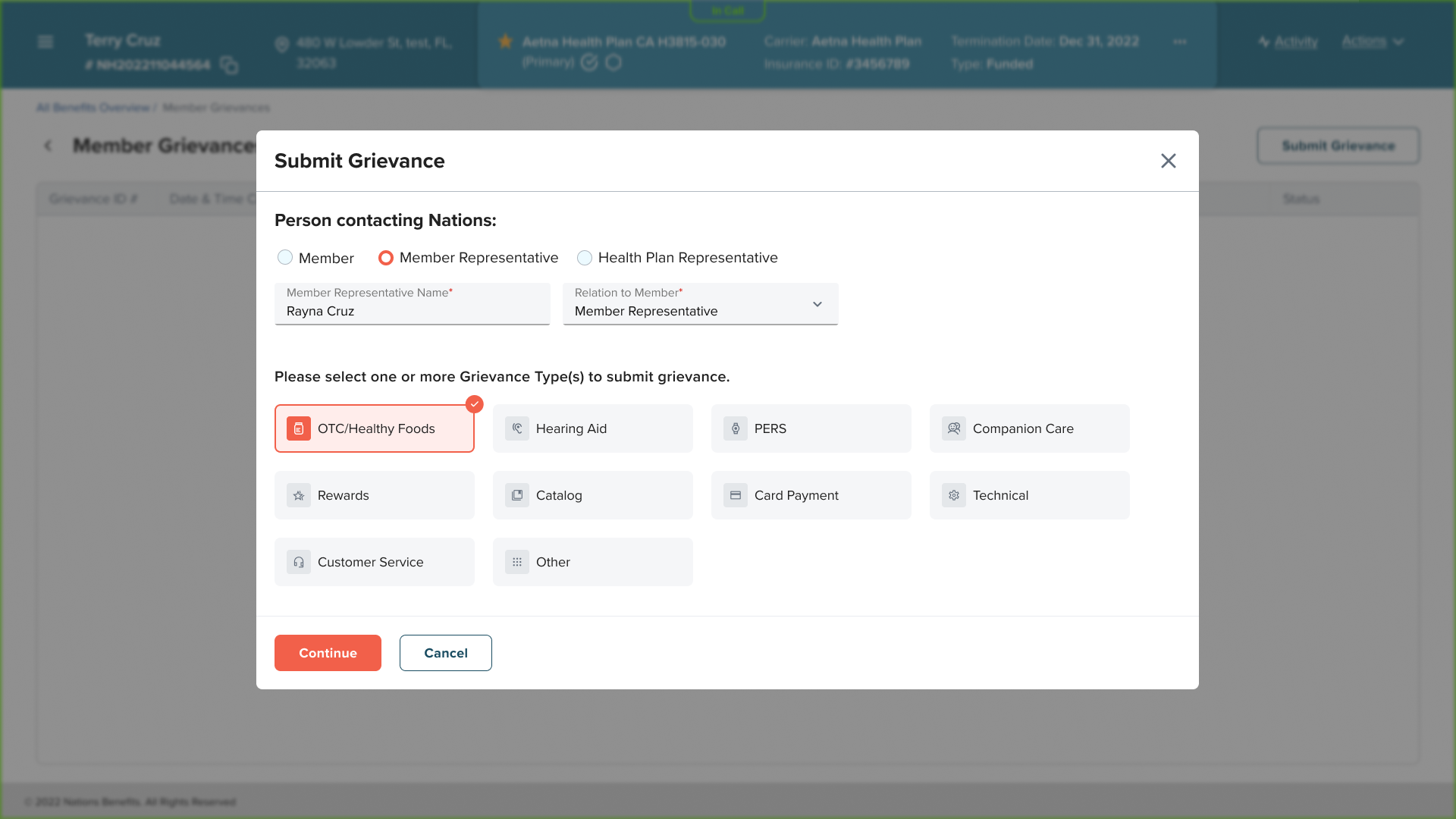
To improve efficiency, we introduced the Quick-Submit Form, allowing MEAs to register grievances within a single screen. With pre-filled details and contextual forms, this streamlined approach significantly reduced time spent on each grievance while maintaining accuracy and flexibility.
Simplified flow – A popup allows MEAs to initiate and register a grievance in just a few clicks.
Includes categorization, detailed grievance entry, and contextual forms tailored to grievance types.
Easily scalable – New grievance types and fields can be integrated without disrupting the existing structure.
Once the Quick submit form variation was finalized, I worked closely with the Product Owner & a Grievance Manager to classify and categorize 15+ grievance types and their subcategories. This process reinforced the scalability of the solution, proving it could accommodate any number of grievances seamlessly.
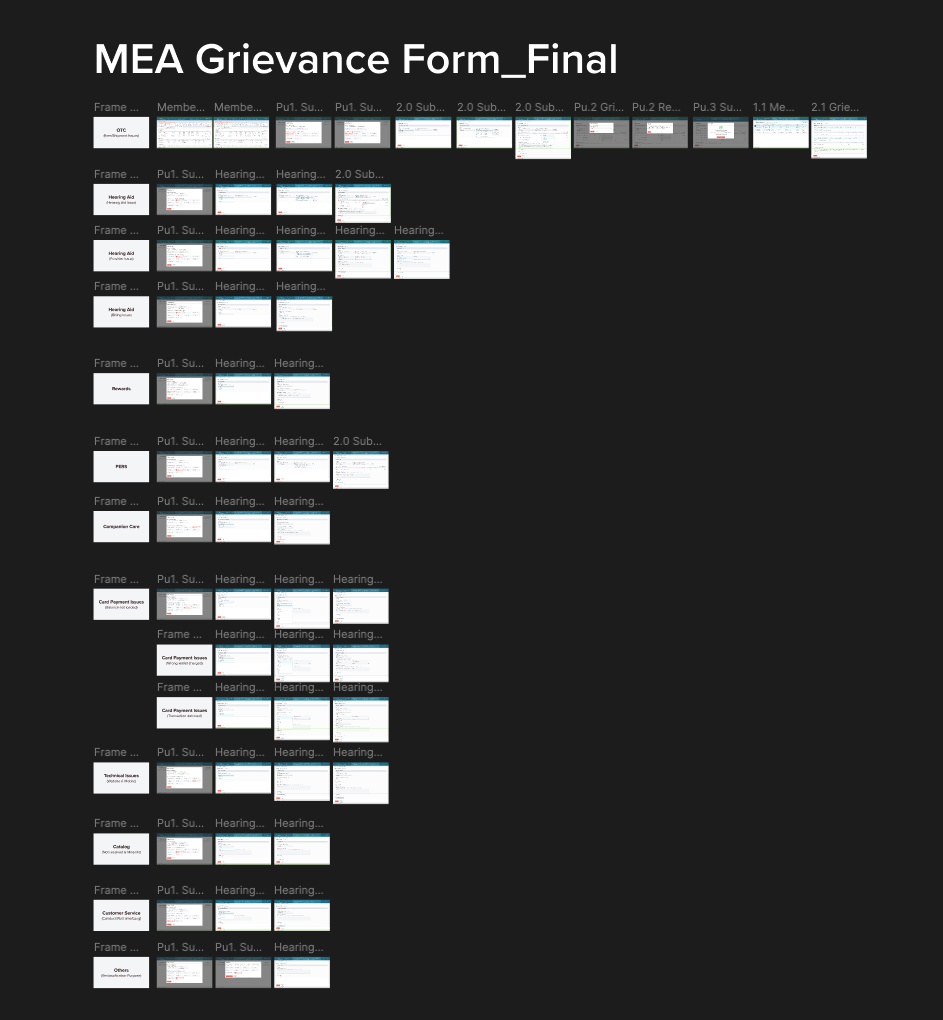
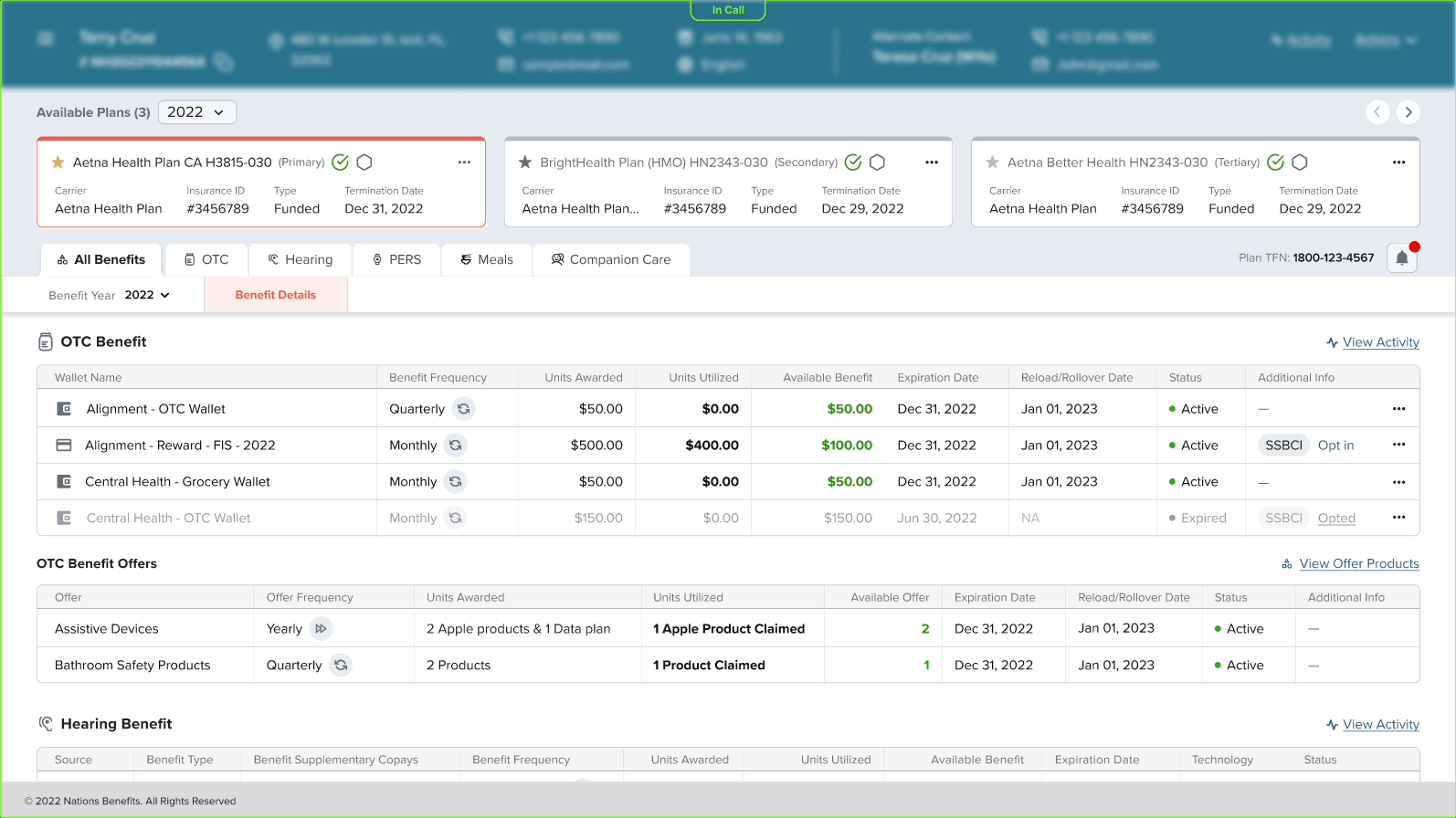
This portal was designed to help Grievance Managers and Analysts efficiently handle escalated grievances through the improved intake process. Unlike the previous system, it offers a centralized hub for tracking, managing, and resolving complaints.
I led the end-to-end design, working closely with Product Owners and Grievance teams, I created a dashboard-centric experience for the users, using a tab-based interface for easy navigation through various grievance statuses, all while following the established design guidelines and system.
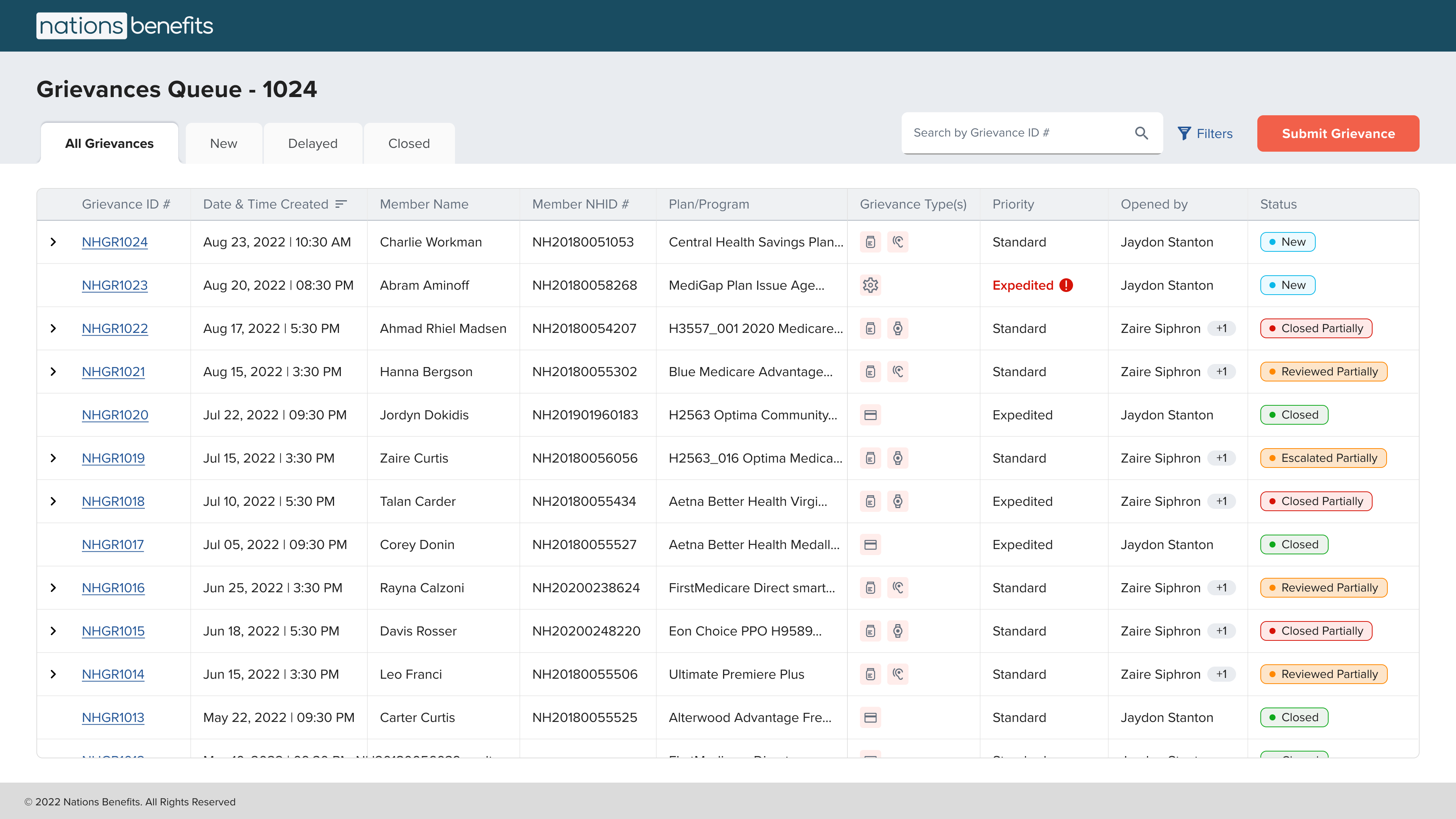
The Grievance team faced difficulties accessing key information quickly due to a dashboard design that hid important details under multiple columns and tabs, requiring excessive scrolling.
Important data was hidden under tabs, making it hard to get a quick overview.
The need for additional scrolling to view more grievances or details led to inefficiencies.
Lack of context in the dashboard meant users couldn’t easily identify the nature of the grievance at a glance.
After exploring different variations, we settled on a bucketed list view to organize grievances by status. This design allows Grievance Managers to efficiently track multiple grievances, assign tasks, and monitor progress all in one place.
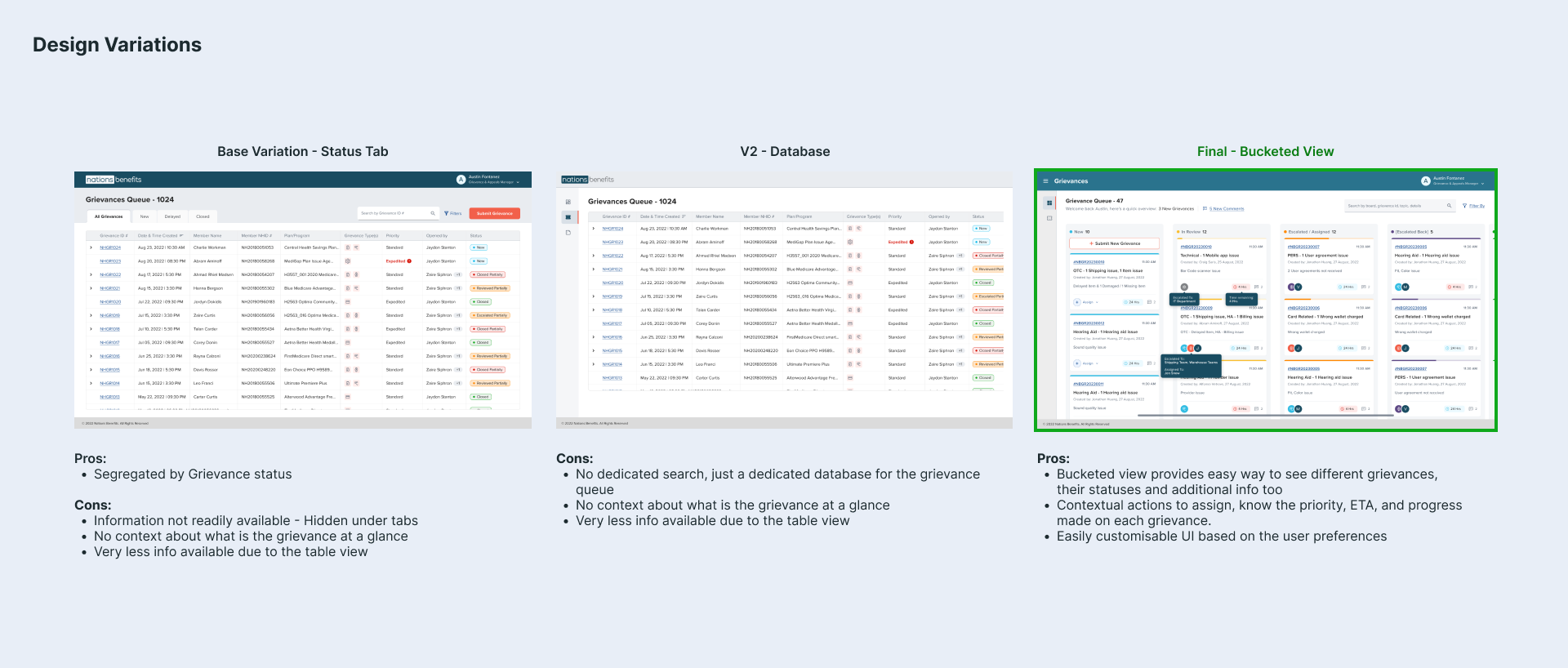
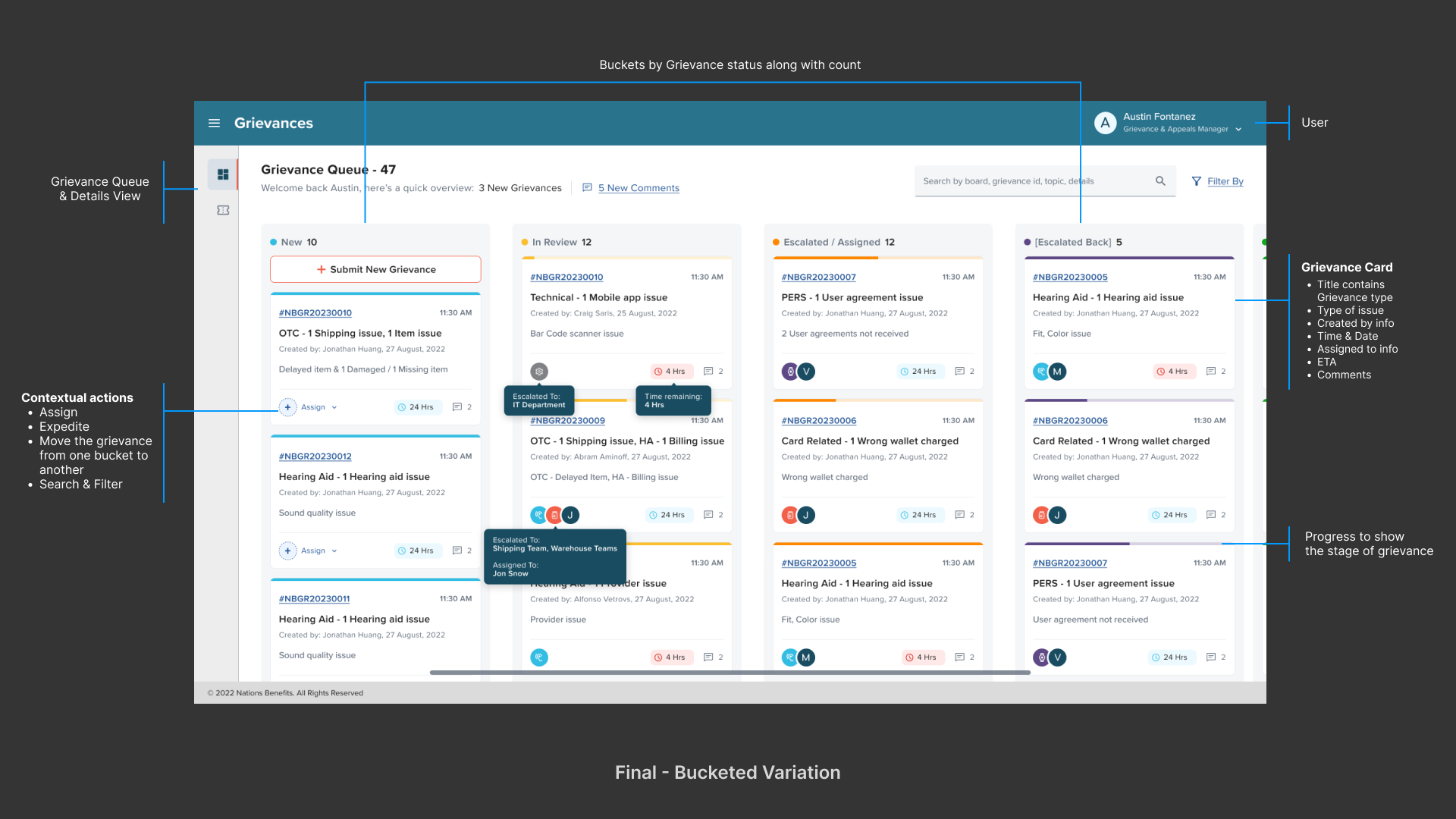
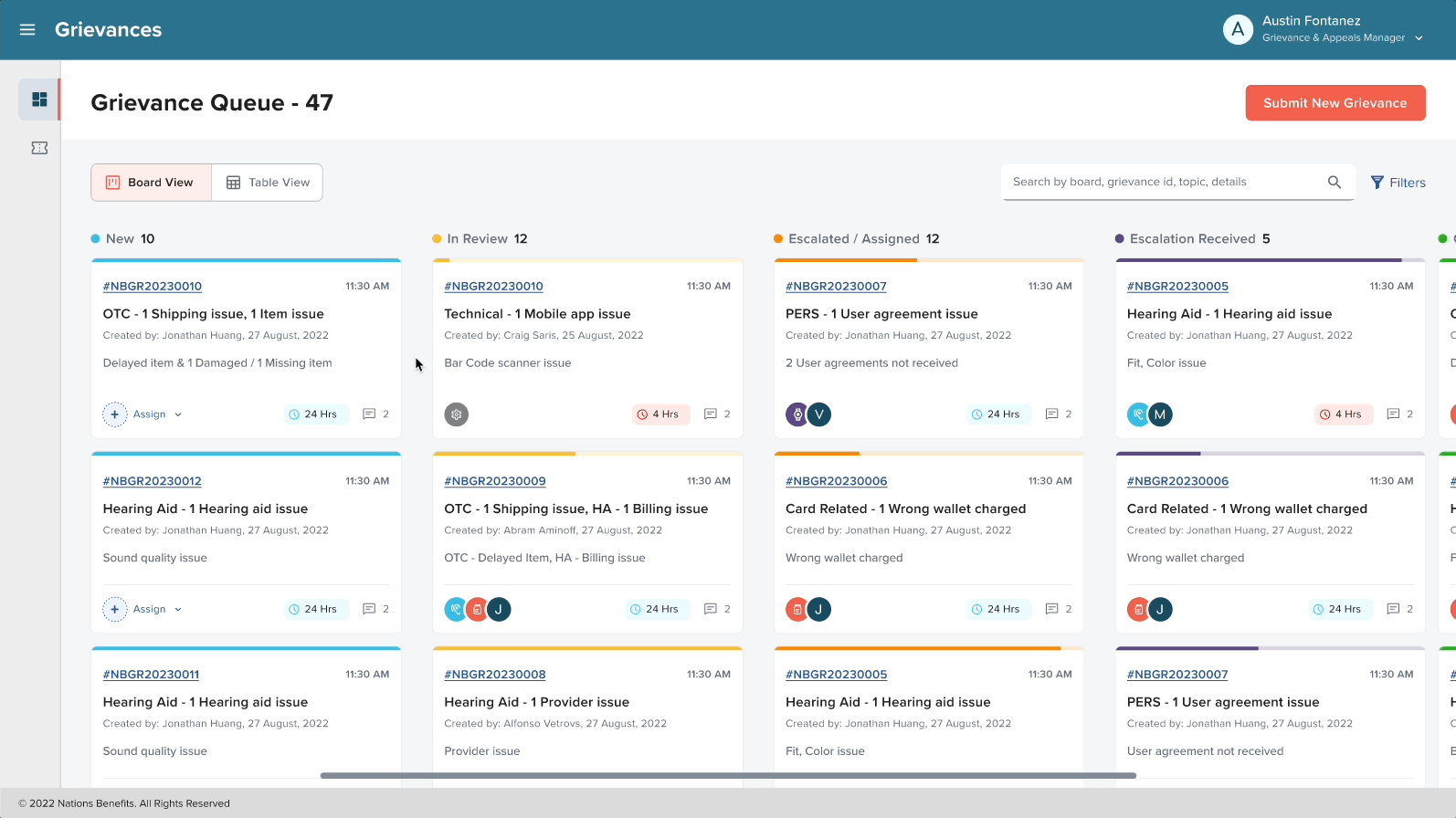
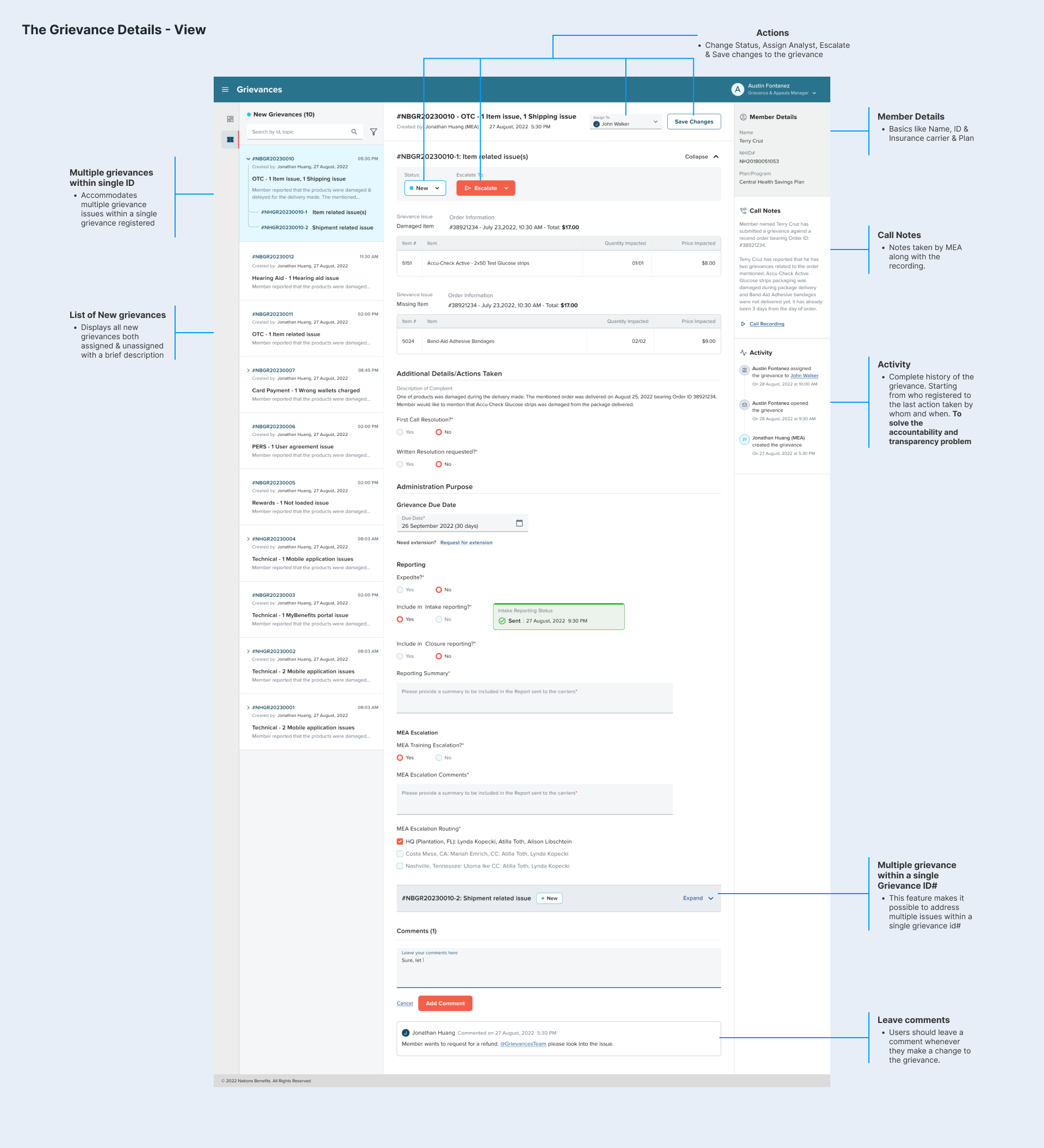
Improved grievance intake efficiency reducing time spent on searching and sorting by ~40%.
Clear grievance ownership and improved tracking, boosting transparency.
Grievances were categorized and prioritized effectively, reducing manual effort by ~15%.
Real-time updates and automated workflows led to a ~15% boost in team productivity.
There was a reduction of about time taken by 40% (searching and sorting) as it was completely automated due to the setup.
We noticed a 15% increase in the productivity of the Grievances team by eliminating the reliance on third-party tools for grievance resolution.
Streamlining the intake and categorization process eliminated manual steps and sped up resolution times.
Engaging with stakeholders, including Grievance Managers and MEAs, ensured the solution met operational needs.
Testing multiple variations helped refine the system and address critical pain points.